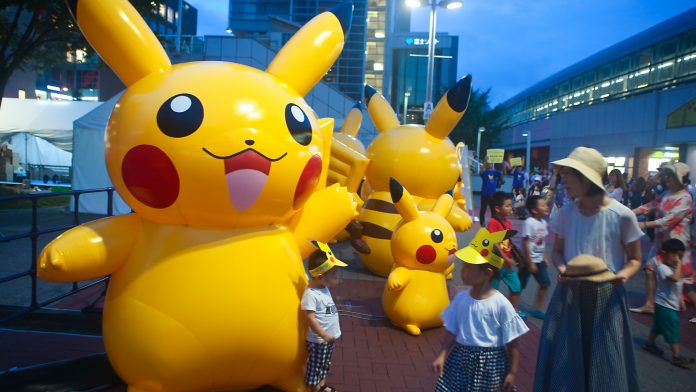
Did your childhood hood involve countless hours spent capturing, training & battling Pokémon? Well, there now may be a link between our visual cortex and catching a Pikachu.
Stanford psychologists have identified preferential activation to Pokémon characters in the brains of individuals who played Pokémon videogames extensively as kids.
Visual cortex, I choose you
Published in Nature Human Behaviour, this research helps to shed light on two related mysteries about our visual system. “It’s been an open question in the field why we have brain regions that respond to words and faces but not to, say, cars,” said study first author and former Stanford graduate student Jesse Gomez. “It’s also been a mystery why they appear in the same place in everyone’s brain.”
A partial answer comes from recent studies in monkeys at Harvard Medical School, USA. Researchers there found that in order for regions dedicated to a new category of objects to develop in the visual cortex – the part of the brain that processes what we see – then exposure to those objects must start young when the brain is particularly malleable and sensitive to visual experience.
Gomez reasoned that if early childhood exposure is critical for developing dedicated brain regions, the brain should respond more to Pokémon characters than other kinds of stimuli. And since the Pokémon characters from the games look very different from objects we typically encounter in our daily experience, visual theories make unique predictions about where activations to Pokémon should appear.
The eccentricity bias theory
The Stanford researchers used a visual theory called eccentricity bias, which states that the size and location of a dedicated category region in the brain depends on two things: how much of our visual field the objects take up, and also which parts of our vision – central or peripheral – we use to view them.
Playing Pokémon on a tiny screen means that the Pokémon characters only take up a very small part of the player’s centre of view. The eccentricity bias theory thus predicts that preferential brain activations for Pokémon should be found in the part of the visual cortex that processes objects in our central, or foveal, vision.
The malleability of the visual cortex
When the test subjects were placed inside a functional MRI scanner and shown hundreds of random Pokémon characters, their brains responded more to the images compared to a control group who had not played the videogame as children.
The site of the brain activations for Pokémon was also consistent across individuals. It was located in the same anatomical structure – a brain fold located just behind our ears called the occipitotemporal sulcus. As best the researchers can tell, this region typically responds to images of animals (which Pokémon characters resemble).
“I think one of the lessons from our study is that these brain regions that are activated by our central vision are particularly malleable to extensive experience,”said Kalanit Grill-Spector, a professor of psychology in Stanford’s School of Humanities and Sciences.
So, are video games good for the brain or not?
The new findings are just the latest evidence that our brains are capable of changing in response to experiential learning from a very early age, said the researchers, but that there are underlying constraints hardwired into the brain that shape and guide how those changes unfold.
For parents who might look to the study as proof that videogames can leave a lasting effect on the brains of impressionable children, Grill-Spector said that our brains are capable of containing multitudes. “The visual cortex is made up of hundreds of millions of neurons,” she said. “We have the capacity to encode many, many patterns in that stretch of cortex.”
Gomez also noted that all of the Pokémon-playing test subjects grew up to be successful adults. “I would say to those parents that the people who were scanned here all have their PhDs,” Gomez said. “They’re all doing very well.”









